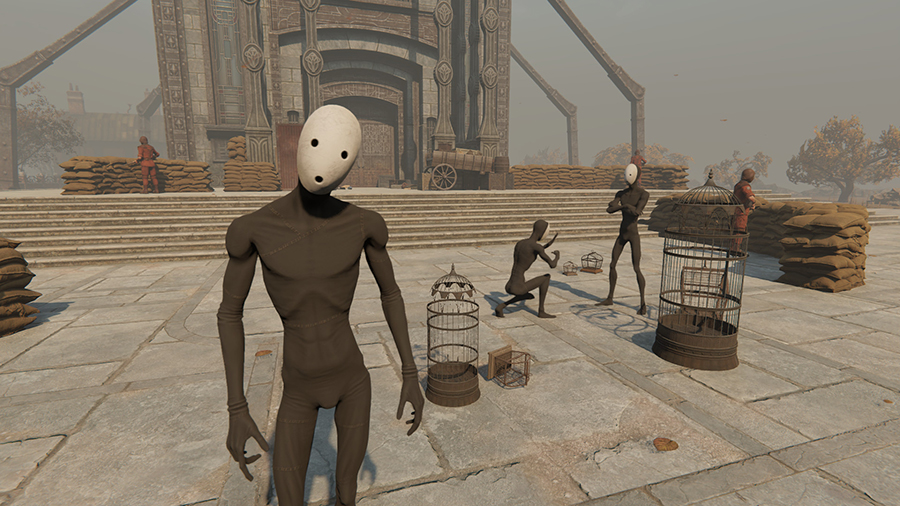How Viral Video Games Model Pandemics
As COVID-19 intensified, video games about disease spread
As COVID-19 intensified, video games about disease spread

At the end of January, Chinese citizens celebrated the Lunar New Year indoors, as the state’s usually lavish firework displays were cancelled. According to figures released by video streaming site Douyu, video games were being consumed by more people than ever before. This isn’t necessarily surprising – each year, digital entertainment experiences a bump from the holiday – but, in 2020, the numbers didn’t go down. As the Chinese government enforced its coronavirus lockdown – beginning in Wuhan on 23 January and spanning at least 20 provinces – millions more turned to video games.
One game that soared in popularity was Plague Inc. (2012), described on the website of its Bristol-based maker, Ndemic Creations, as a ‘terrifyingly realistic simulation’. It shot to the top of charts in China, Italy, Japan, the UK and the US, a trajectory that seemed to almost follow the spread of COVID-19.

Plague Inc. is far from the only video game to represent disease. A Plague Tale: Innocence (2019) is rife with Black Death-carrying rats – rendered as a writhing collective – while the Japanese horror series Resident Evil (1996–ongoing) uses the T-virus as a narrative device for its own pulp zombie action. The remake of the third game in the series was released in April, invoking the aesthetics of a grim post-pandemic world, with infected marauders stalking its virtual streets. For the most part, games like this one treat outbreaks as little more than set dressing.
By comparison, Plague Inc. offers complex modelling. Players assume the role of the virus itself, controlling its severity and altering its path from continent to continent. Difficulty, meanwhile, is determined by an algorithm that accounts for how often the AI-controlled human population washes its hands and tests its citizens. Even as the game asks us to play the ‘antagonist’, its global map mimics a war room, resonating with how politicians around the world have framed the pandemic as a phenomenon to be ‘fought’ and ultimately ‘beaten’. Mercifully, the game makes it extremely difficult to wipe out humanity entirely, implying, with a dash of macabre humour, that life does indeed go on.

Pathologic 2 (2019), a first-person survival game, marries the two approaches, simulating both the spread of a deadly disease and enabling players to explore a town ravaged by its effects. Unlike the visual abstractions of Plague Inc., Pathologic 2 brims with details reminiscent of lockdowns across the world: police officers harass citizens, masks are commonplace and panic hoarding has taken root. Players traverse the environment – conversing with townspeople and carrying out various tasks – while safeguarding their own survival. Thirst, hunger and exhaustion are managed alongside an infection level, each threat represented by gradually depleting or rising bars. At times, the player’s body seems to be a proxy for society at large, their needs hanging precariously in relation to one another.
For those able to quarantine at home, the pandemic’s effects have mostly been perceptible in the media as a series of data points: fluctuating stocks of personal protective equipment, plunging oil prices and, of course, the escalating death toll. Plague Inc. and Pathologic 2 share this fondness for numbers, representing the quantifiable effects of disease.

Arguably, the most significant in-game virus arrived in 2005 when Blizzard released the infectious disease Corrupted Blood into the hit massively multiplayer online game World of Warcraft (2004). The virus was intended to make combat more difficult for advanced participants fighting a late-stage enemy but, as individuals teleported out of the fight, they infected new players who were more vulnerable to its effects. As in real life, the disease could be passed on by asymptomatic in-game pets and other non-playable characters, resulting in thousands of avatar fatalities.
World of Warcraft’s outbreak was the result of the game’s structure: dynamic systems layered upon one another that attempted to reflect the world’s complexity – or at least part of it. In quarantine, video games have emerged as an important stress-alleviating escape. However, like virus-related films such as Contagion (2011), which have seen a surge in popularity, they can also function as exposure therapy: a means to psychologically confront a continuously evolving threat.
Main Image: A Plague Tale: Innocence, 2019, film still. Courtesy: Focus Home Interactive





















